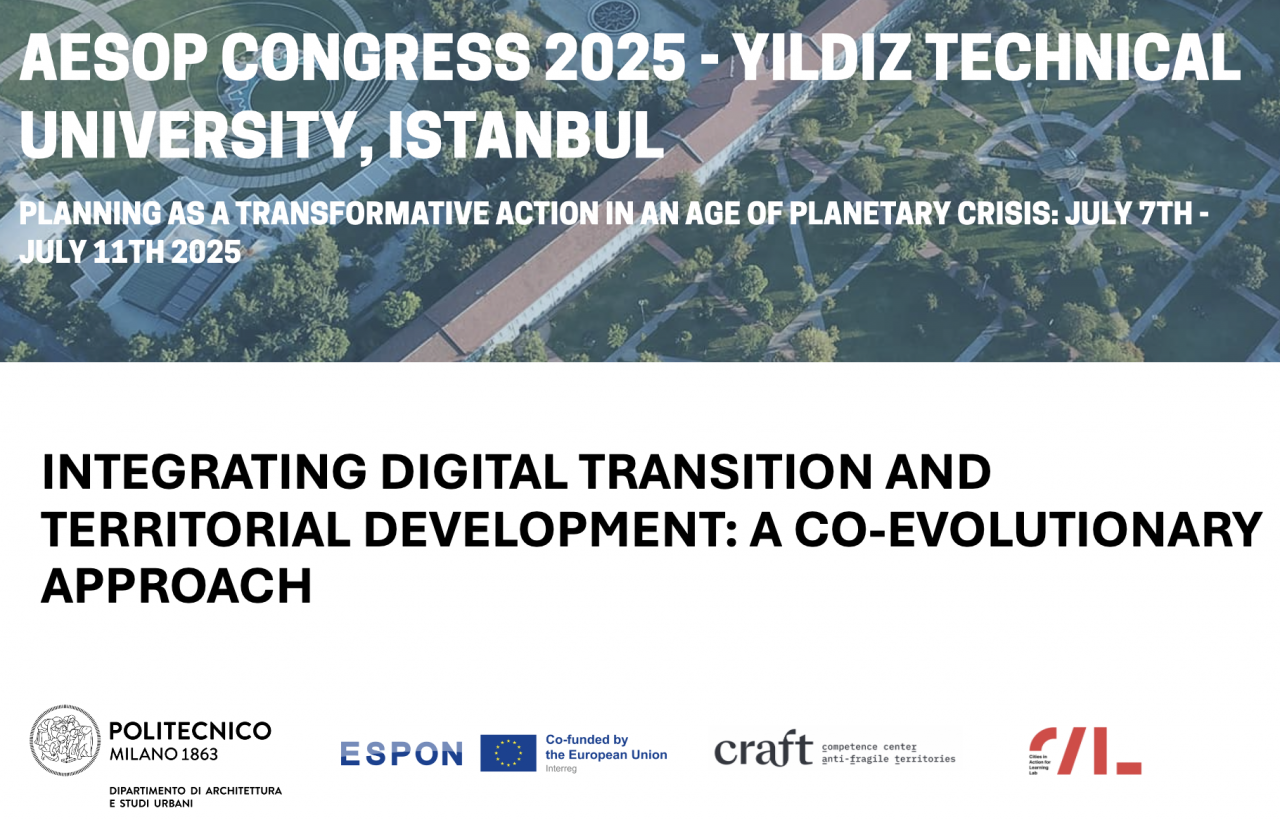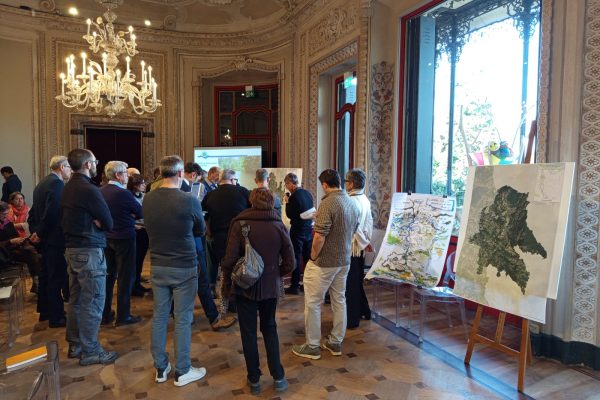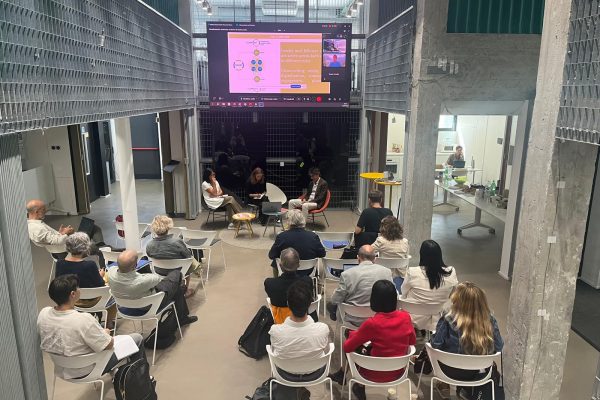
DIGIREG talks Digital Transition and Territorial Development at the AESOP 2025 Congress
Envisioning Translocality
Enabling Institutions
Enforcing Practices
Last week, during the AESOP 2025 Congress in Istanbul, the ESPON DIGIREG group (Grazia Concilio, Daniele Viarengo and Zintis Hermansons) coordinated a round table titled “Integrating digital transition and territorial development: a co-evolutionary approach”.
The digital transition is transforming the way we conceive and govern territorial and regional development, yet planners have not given this phenomenon the attention it deserves and have let digital policies be set and implemented independently of territorial development. There is a shared view that socio-economic development at the regional scale results from the advancement of digital infrastructures and services while a co-evolutionary approach could help ensure more equitable and resilient territories.
After introducing the DIGIREG project, Valeria Fedeli opened the discussion on the interplay between “Digital infrastructures and territorial fragility”.
Three sessions followed, guiding the presentations of Oren Yiftachel (Ben Gurion University, Israel), Valeria Monno (Politecnico di Bari, Italy) and Camilla Perrone (Università Studi di Firenze, Italy).
- The way in which digital technologies are integrated into a particular region is shaped by the unique socio-economic and institutional characteristics of that region, making the digital transition a spatially contextualized process. This interplay highlights the need for approaches that integrate digital policies with territorial development strategies. Yet, planners often address these domains separately, allowing digital policies to be developed and implemented without integration into territorial development strategies. To what extent should spatial planning integrate the digital infrastructuring dimension? What are possible planning actions to be developed and implemented?
- While the concept of the digital divide can, to some extent, be conceived as decontextualized from specific geographical settings, the digital transition is always inherently tied to a specific territorial scale, thus affecting disparities between regions or territories. How can spatial planning compensate disparities and inequalities strengthened by digital infrastructuring dynamics? Can this be one of the roles played by spatial planning?
- It is a shared vision that socio-economic development at the regional scale is consequent to the advancement of digital infrastructures and services, while the idea for a co-evolutionary vision would guarantee more efficient investments, equitable territorial attractiveness, and reduced territorial fragility. How can research methodologies and policy approaches be developed to support such a co-evolutionary vision? How can planning work to guarantee such a co-evolutionary vision?




